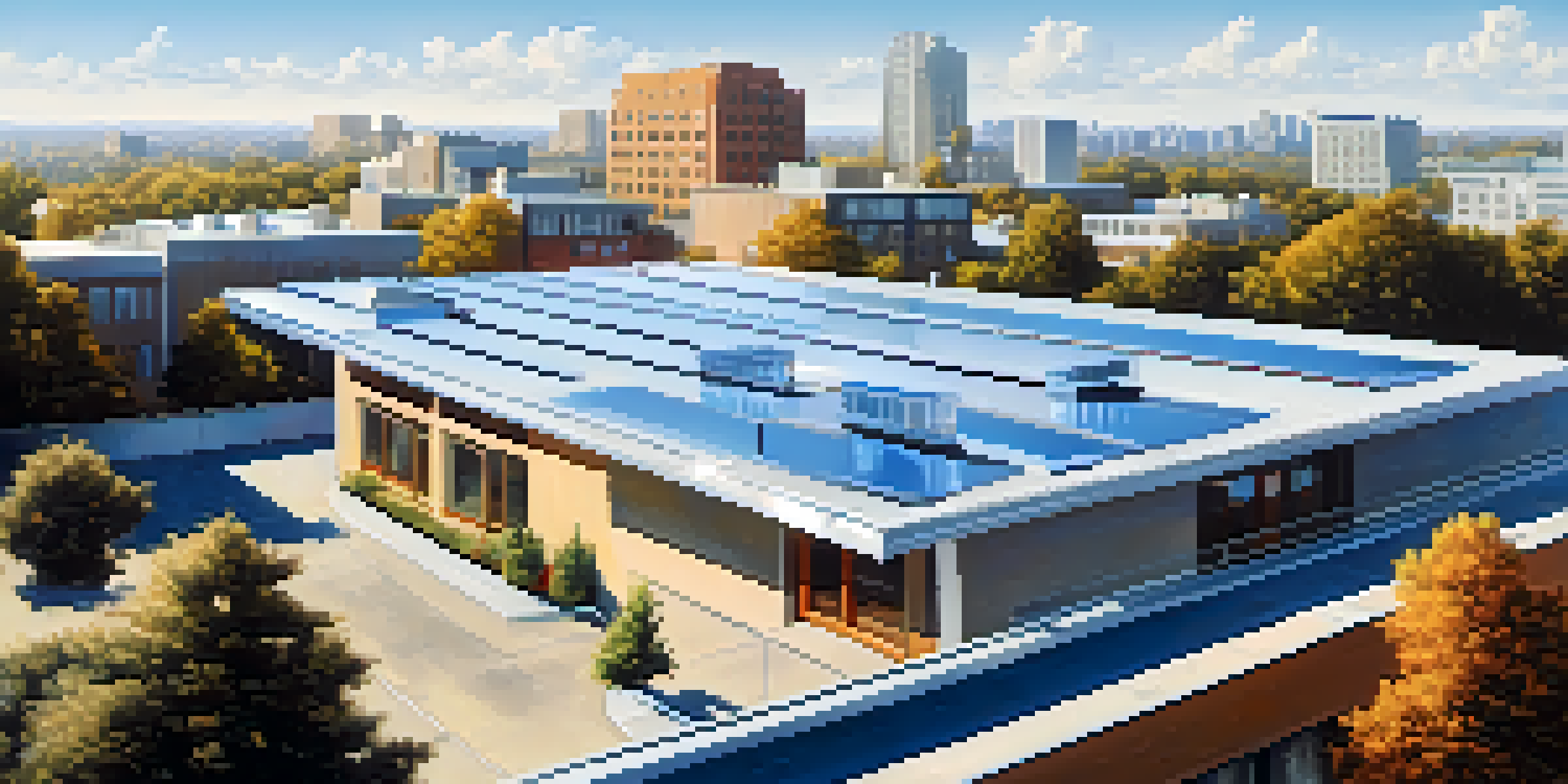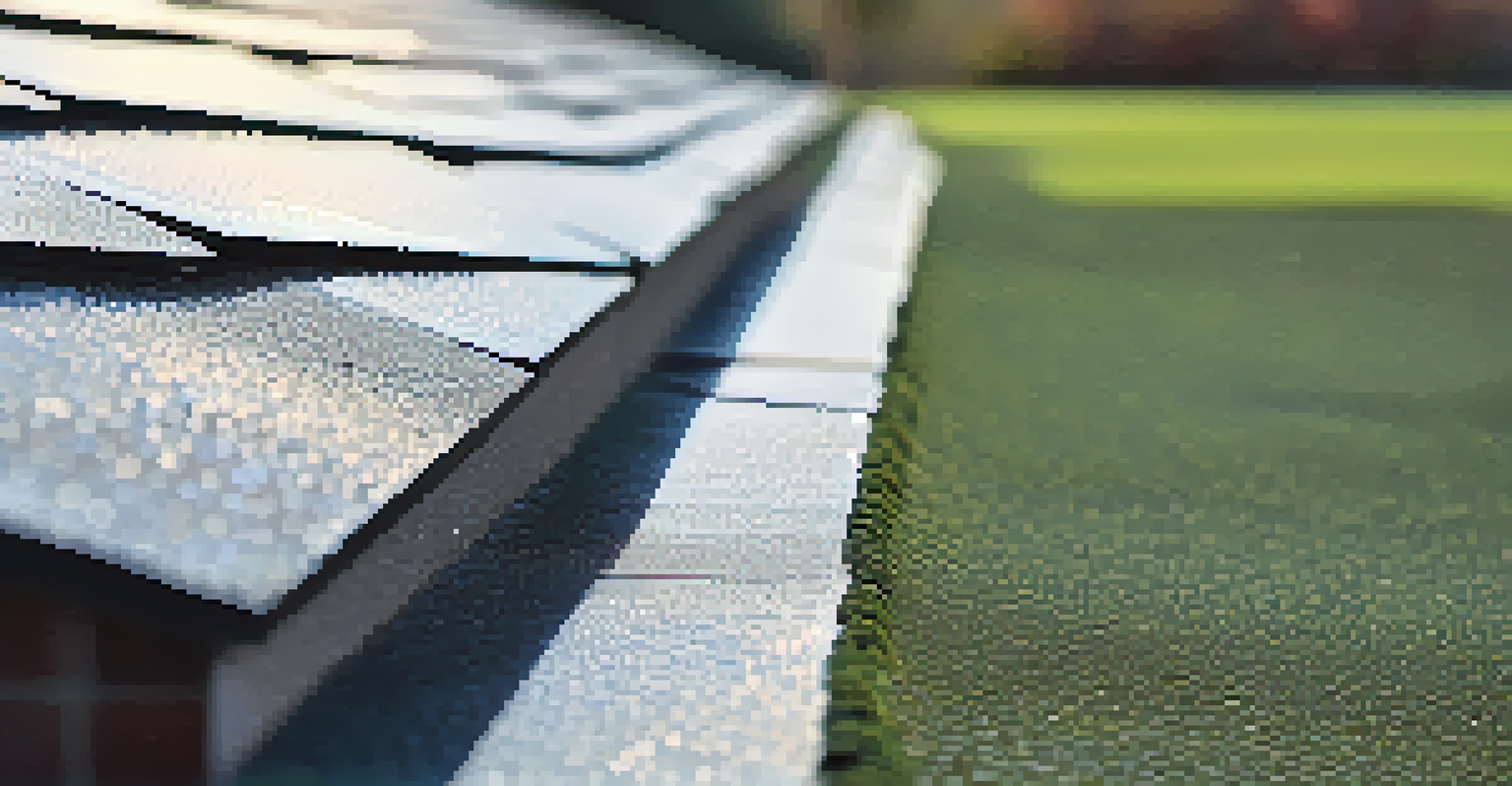Exploring the Use of Cool Roofs for Energy Efficiency Gains

What Are Cool Roofs and How Do They Work?
Cool roofs are designed to reflect more sunlight and absorb less heat than standard roofs. This is achieved through reflective materials or coatings that can significantly lower roof temperatures. By keeping roofs cooler, these systems reduce indoor temperatures, which leads to lower energy consumption for cooling.
The environment is where we all meet; where we all have a mutual interest; it is the one thing all of us share.
Imagine it like wearing a white shirt on a hot day instead of a black one. The lighter color reflects sunlight, keeping you cooler. Similarly, cool roofs work to reflect solar energy, which can lead to substantial energy savings, especially in warm climates.
In essence, cool roofs are a smart, eco-friendly choice that not only benefits individual buildings but also contributes to a cooler urban environment, reducing the heat island effect in cities.
The Energy Efficiency Benefits of Cool Roofs
One of the most significant advantages of installing a cool roof is the reduction in energy costs. By reflecting sunlight, these roofs can lower energy use for air conditioning by up to 15%. This is especially beneficial during peak cooling periods when energy costs are typically higher.

Beyond savings on energy bills, cool roofs also extend the lifespan of roofing materials. When roofs are cooler, they experience less thermal stress, leading to fewer repairs and replacements over time. This not only saves money but also reduces waste and environmental impact.
Cool Roofs Lower Energy Costs
By reflecting sunlight, cool roofs can reduce air conditioning energy use by up to 15%, significantly lowering energy bills.
Overall, the energy efficiency gains from cool roofs can be substantial, making them a wise investment for homeowners and businesses alike.
The Environmental Impact of Cool Roofs
Cool roofs play a vital role in combating climate change. By reducing the heat absorbed by buildings, they decrease the demand for energy generated from fossil fuels, which in turn lowers greenhouse gas emissions. This makes cool roofs a proactive measure against global warming.
What we are doing is not just for ourselves, but for the future generations.
Moreover, they help mitigate urban heat islands—areas that are significantly warmer than their rural surroundings due to human activities. By cooling cities, cool roofs can contribute to improved air quality and reduced smog, creating healthier living environments.
In essence, the environmental benefits of installing cool roofs extend far beyond individual buildings—they contribute to a more sustainable future for our planet.
Different Types of Cool Roofs Available
There are several types of cool roofs, including reflective membranes, coatings, and tiles. Each option varies in terms of materials, costs, and aesthetics, allowing homeowners and builders to choose based on their specific needs. For instance, reflective membranes are often used in commercial buildings, while coatings can be applied to existing roofs.
Another popular choice is cool roofing shingles, which come in a variety of colors and styles. These shingles reflect sunlight while providing the same aesthetic appeal as traditional roofing materials. This means you don't have to sacrifice style for energy efficiency.
Environmental Benefits Abound
Cool roofs help combat climate change by reducing energy demand from fossil fuels, leading to lower greenhouse gas emissions.
Overall, the variety of cool roof options means there’s likely a solution that fits almost any building or budget.
Installation Considerations for Cool Roofs
When considering a cool roof, it’s essential to assess the existing structure and climate conditions. Some roofs may require additional reinforcement or modifications to support the new materials. Consulting with a professional can help determine the best approach for your specific situation.
Timing can also play a crucial role in installation. Ideally, cool roofs should be installed during mild weather to ensure proper adhesion and effectiveness. Additionally, it’s important to prepare for any local building codes or regulations that might impact your project.
By taking these factors into account, you can ensure a successful installation that maximizes the benefits of your cool roof.
Cost Implications of Cool Roofs
The initial cost of a cool roof can be higher than traditional roofing options, but the long-term savings often outweigh this upfront investment. Homeowners may see lower energy bills and reduced maintenance costs over time, leading to a favorable return on investment.
Additionally, various incentives and rebates may be available for those who opt for energy-efficient roofing solutions. These financial aids can help offset the initial costs, making cool roofs more accessible for many.
Variety of Roof Options Available
With options like reflective membranes and cool roofing shingles, homeowners can choose cool roofs that fit their aesthetic and budget needs.
Ultimately, considering the cost implications is crucial, as investing in a cool roof can lead to significant savings and environmental benefits in the long run.
Real-World Examples of Cool Roofs
Cities like Los Angeles and New York have embraced cool roofs as part of their sustainability initiatives. For example, in Los Angeles, a program was launched to encourage residents to install cool roofs, resulting in a substantial decrease in energy consumption across the city.
Similarly, many commercial buildings have adopted cool roofing technologies, leading to a noticeable reduction in energy costs. These real-world examples demonstrate the effectiveness of cool roofs and their potential to drive significant change.

As more cities and businesses recognize the benefits of cool roofs, we can expect to see an increase in their popularity and implementation, paving the way for a greener future.